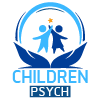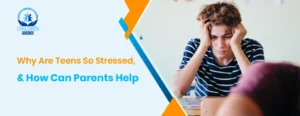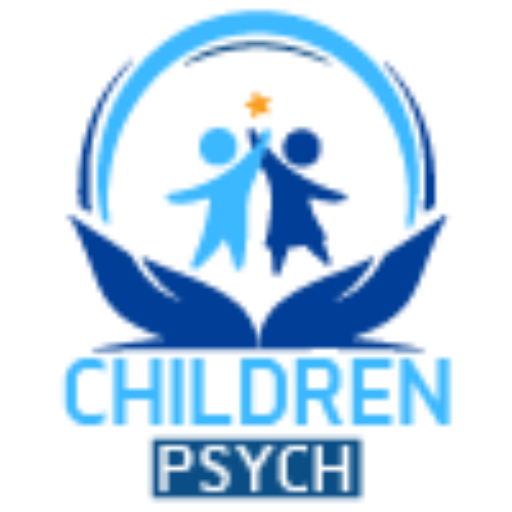Is your child exhibiting severe mood alterations? Does your child sometimes experience elevated energy levels? If yes, then it is a strong indication of the occurrence of bipolar disorder, a common mental illness that can affect children, adolescents, and adults. Several studies have reported that approximately 3% of children are diagnosed with bipolar disorder, but it manifests differently than in adults. However, the increasing number of bipolar children is also raising awareness regarding the effective support and treatment plans so each child can get rid of the bipolar disorder symptoms and cherish each moment of life.
If you are curious to know more regarding the ‘’ Bipolar disorder in children vs Adults’’ then read this article. You will also understand how bipolar disorder affects children and what the most effective treatment options are to manage the symptoms of bipolar disorder.So read now!
Understanding Bipolar Disorder in Children VS Adults
Bipolar disorder is a common mental health condition that affects the emotional stability of children. They experience intense levels of alteration in mood, energy, thought patterns, and irritability. Mood shifts can persist for a longer period and can negatively affect essential daily life activities.
In most cases, bipolar disorder is diagnosed in adults, but in some cases, its symptoms also become evident in childhood stages.
Although there is no cure for bipolar disorder in children, with the help of some effective therapeutic strategies, children can experience lasting relief from this mental illness. Bipolar disorder comprises two different episodes of:
- Major depression
- Mania
Bipolar disorder’s mood swings are different from the typical childhood mood swings or alterations. The intensity and frequency of each symptom of bipolar disorder in children are higher than those symptoms that are typically found in childhood stages. Moreover, the early onset of bipolar disorder in children is also responsible for the increased susceptibility to mood disorders as compared to adults.
First signs of Bipolar disorder in children VS Adults
In children, the first main sign of bipolar disorder is depression. However, in adults, mania and hypomania become visible as the first sign of bipolar disorder.
Parents, caregivers, or seniors first observe the changes in the behavior of children. Affected children usually exhibit the following behavior during the depressive episode of bipolar disorder:

- Most often sadness
- Lack of motivation
- Reduced ability to focus or concentrate
- Irritable behavior
- Agitation
- Loss of pleasure or interest in activities
- Sudden changes in appetite
- Reduced energy levels
- Sense of guilt or worthlessness
- Insomnia or sleeping too much
- Frequent crying without any apparent reason
- Suicidal or self-harming thoughts
- Agitated behavior
Behaviors of children in the manic phase include:
- Increased energy levels
- Extreme levels of happiness
- Extreme excitement
- Low need for sleep
- Highly impulsive behavior
- Talkative behavior
- Higher involvement in different activities
- Higher rate of distractibility
- Increased interest in participating in risky activities

Mixed episode
Both episodes of pediatric bipolar disorder occur cyclically. In most cases, both occur at the same time and are referred to as mixed episodes of bipolar disorder.
Hypomania in children
Hypomania is a form of mania, but its severity is comparatively lower. In addition, major symptoms of hypomania in children are as follows:
- Rise in energy levels
- Elevated mood
- Highly impulsive behavior
- Less need for sleep
- Irritable mood
- Inflated level of self-esteem
Bipolar disorder in Children VS adults
| Bipolar disorder in children | Bipolar disorder in adults |
| In children, mixed states of bipolar episodes are more common. | In adults, bipolar disorder comprises separate episodes of mania and depression. |
| 1.8% to 4% of children and adolescents suffer from bipolar disorder | 2.8% of US adults suffer from bipolar disorder
Approximately 40% of the adults report the symptoms of bipolar disorder in their childhood stages |
| Children have a lack of clarity in bipolar episodes | More clear episodes of major depression and mania |
| Mood swings are more volatile | Mood swings are less volatile |
| Children experience higher irritability | Lesser irritability |
| Emotional instability is higher in children | Comparatively lower and manageable |
| Symptoms of bipolar disorder can appear in childhood stages | Majorly diagnosed in adulthood stages |
| The manic episode of children includes mainly aggressive and irritable behavior | In adults, mania includes high levels of confidence, happiness, and energy. |
| In older children and adolescents, paranoia and euphoria are more common as compared to adults. | The rate of euphoria declines as the person ages. |
| Bipolar symptoms show more overlap with other common mental issues | There is a clear differentiation of bipolar disorder symptoms from other mental issues |
| Bipolar disorder in children is more continuous | Adult bipolar disorder is less continuous |
| Little or extra need for sleep | In a manic episode, there is little requirement for sleep |
| There is a greater activation in the right amygdala brain region of children | Less activation |
| Children also find it hard to explain their emotions | Adults consider it less hard to articulate their emotional experiences |
| In children, the brain is in the developmental stage, which is the main reason that bipolar disorder manifests in children in a varied manner. | Adults have complete brain development, which in turn results in greater impulse control. |
| Symptoms can affect the academic, personal, and social life | Interference in work, personal life, and especially daily life functioning |
| Diagnosis is more challenging and complicated | Diagnosis is based on self-evaluation and clinical observation |
Diagnosis of Bipolar disorder in children
There is no specific body or blood test to diagnose bipolar disorder in children. In addition, the accurate diagnosis of bipolar disorder in children is quite difficult, as they are also experiencing environmental stress factors such as childhood abuse, physical abuse, etc. If they have experienced any physical trauma, then there are higher chances that they exhibit severe mood swings. Moreover, their emotional instability and frequent irritability are also evident.
Most of the symptoms of bipolar disorder in children are also related to other conditions, such as:
- Anxiety disorders
- Attention deficit hyperactivity disorder (ADHD)
- Depression
- Conduct disorder
- Oppositional defiant disorder
- Substance abuse disorder
Therefore, it results in difficulty in diagnosing the actual condition of children. If a situation occurs when it’s completely unclear what the actual condition is, then it is better to first treat the ADHD, as it is more common in children as compared to bipolar disorder and other mental health issues.
Another major reason is the increased effectiveness of ADHD treatment. Stimulant medications also work faster as compared to other medications. So if the child has ADHD, then stimulants result in positive effects. But if it does not happen, it can be a sign that a child might have bipolar disorder.
Bipolar disorder and ADHD in children
In both bipolar disorder and ADHD, there are multiple overlapping symptoms in children that make the accurate diagnosis more challenging. The most common overlapping symptoms in children include:
- Impulsivity
- Hyperactivity
- Irritability
- Distractibility
- Mania in bipolar disorder shows a strong resemblance to ADHD hyperactivity.
- Irritable behavior in mania also shows resemblance with aggression and low tolerance for frustration, which is common in ADHD.
Bipolar disorder and depression in children
Several studies have reported that individuals who have experienced the symptoms of depression are more prone to suffer from bipolar disorder. It is quite difficult to make a difference between bipolar disorder and ADHD in children as compared to adults. Several symptoms are similar in both depression and bipolar disorder in children, such as:
Irritability: Common in both depression and bipolar disorder
Other major overlapping symptoms include:
- Sadness
- Difficulty in focus or concentration
- Sleep issues
- Undesired changes in appetite
Furthermore, there is also an increased risk of depression to get change into bipolar disorder in children as compared to adults.
Treatment of Bipolar Disorder in Children Vs Adults
Children suffering from bipolar disorder face difficulty in different areas of their lives. If they are at the school, they face difficulty in focus or concentration and therefore experience major lag in learning. Likewise, they also deal with many challenges in their personal and social life, as they can not easily make bonds with others. Moreover, if the bipolar disorder in children is not treated on time, then it can persist go adulthood and can lead to major issues such as substance abuse and suicidal actions.
Therefore, there is a strong need for the early intervention, diagnosis, and treatment of bipolar disorder in children so they can enjoy every single moment of life without any episodes of bipolar disorder.
| Bipolar Disorder Treatment in Children | Bipolar Disorder Treatment in Adults |
| Before treatment, the first step is the diagnostic evaluation performed by the experts. | Self-evaluation or by experts |
| Experts prescribe mood stabilizers to manage the undesired or negative changes in mood.
Antidepressants are also recommended to manage the symptoms of depressive episodes, but they are used along with mood stabilizers and antipsychotics to prevent any negative consequences. |
Experts recommend a combination of psychotropic medications to treat bipolar disorder in adults, such as:
Moodstabilizerss Antidepressants Antipsychotics |
| Stimulants are recommended in those cases where children suffer from ADHD and bipolar disorder. | |
| Psychotherapy is also an effective treatment option for bipolar disorder.
It helps the children to first identify the errors or triggers of their negative thoughts, and then experts guide them to useful ways to get rid of them and manage their symptoms and associated behavior |
Major therapies which are used to treat adult bipolar disorder include:
Cognitive behavioral therapy Family-focused therapy Psychoeducation |
| Major types of psychotherapy that are effective for the treatment of bipolar disorder include:
Cognitive behavioral therapy Interpersonal and social rhythm therapy Chronotherapy Family-focused therapy |
Other coping strategies for pediatric bipolar disorder include:
- Open communication with children
- Developing a secure and friendly environment for children
- Developing a strong sense of positive reinforcement
- Joining support groups
- Self-care
- Healthy diet
- Balanced sleep-wake cycle
- Regular workout or physical activity
Final thoughts
Bipolar disorder is a mental illness that can occur in both children and adults. However, in children, it looks different compared to adults. The presentation of bipolar disorder symptoms in children is distinct. They exhibit more irritable behavior during the phase of mania in bipolar disorder. Moreover, in children, this mental illness is more continuous as compared to adults. The diagnosis of bipolar disorder in children is also difficult in children due to the overlapping symptoms and co-occurrence of other mental conditions. Fortunately, bipolar disorder in children can be treated or managed with medications and psychotherapy.
Children’s Psych: Ideal destination for your Child’s mental wellness
At Children Psych, we are committed to helping every child who is struggling with any mental illness, such as anxiety, depression, bipolar disorder, ADHD, and OCD, etc. Our skilled child psychiatric nurse practitioners are devoted to providing personalized psychiatric solutions for each child and adolescent.
So if you know any child who is a victim of bipolar disorder, then Children Psych is an ideal place for you. Don’t wait anymore and book an appointment with our experts to find the best mental health solutions for your child, because your child deserves the best care to thrive in life.
Is your child living with bipolar disorder?
Reach out to Children Psych experts and explore the best treatment options for bipolar disorder in children
Frequently Asked Questions
Does bipolar disorder only affect adults, or is this illness possible in children?
Bipolar disorder is most commonly diagnosed in adults, but children and adolescents also suffer from it. Children with bipolar disorder experience severe mood swings or emotional highs that interfere with their normal life functioning.
What are the common signs of a bipolar child?
The major signs of bipolar disorder in children are as follows:
Hyperactive behavior
Increased impulsivity
Long phases of mood swings
Most often, racing or intrusive thoughts
How is bipolar disorder in children different from adults?
Bipolar disorder in children shows more continuity as compared to adults.
What are the signs of bipolar disorder in a teenage girl?
The most common and visible signs of bipolar disorder in teenage girls include:
Excessive mood swings
Anger issues
Sleep issues
Changes in appetite
What are manic symptoms in children?
Elevated levels of energy
Aggression
Defiance
Grandiosity
What is stage 1 bipolar disorder?
It is also known as manic-depressive disorder. In this, individuals, including children, experience the severe form of mood alterations and major changes in energy levels.




